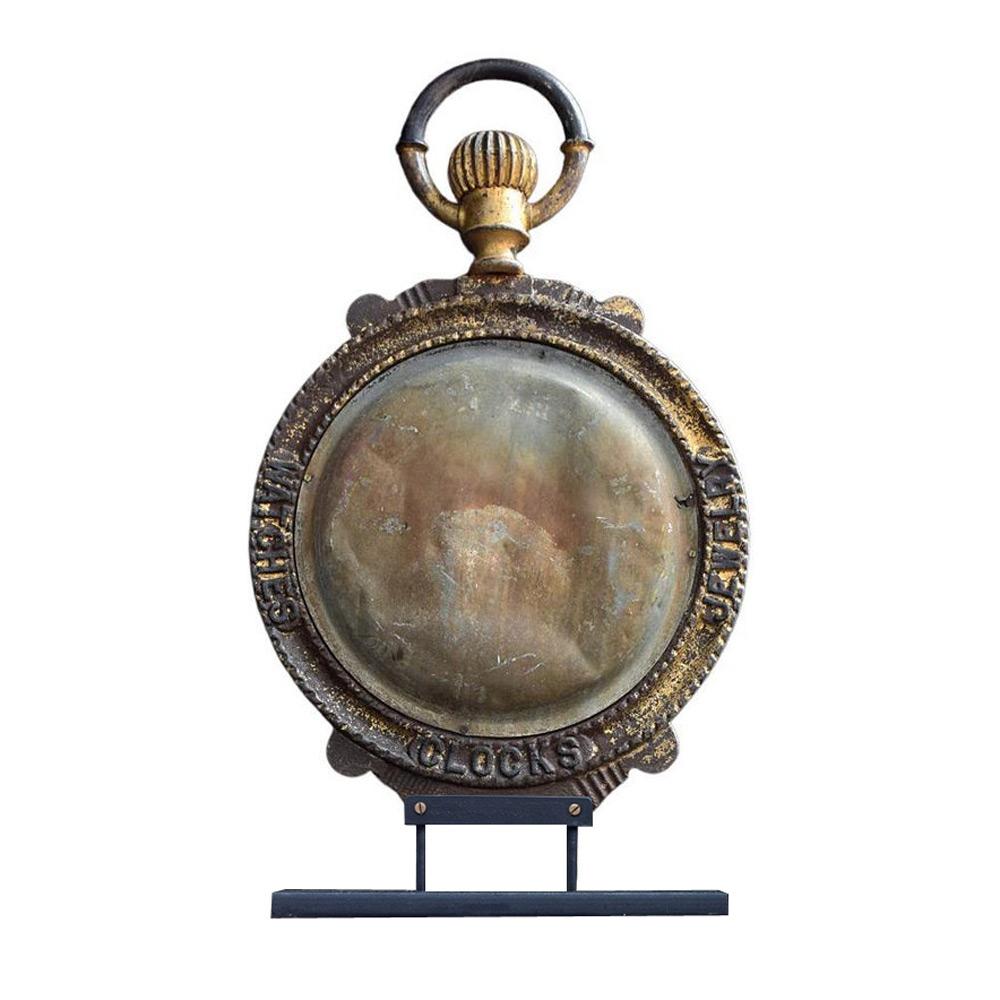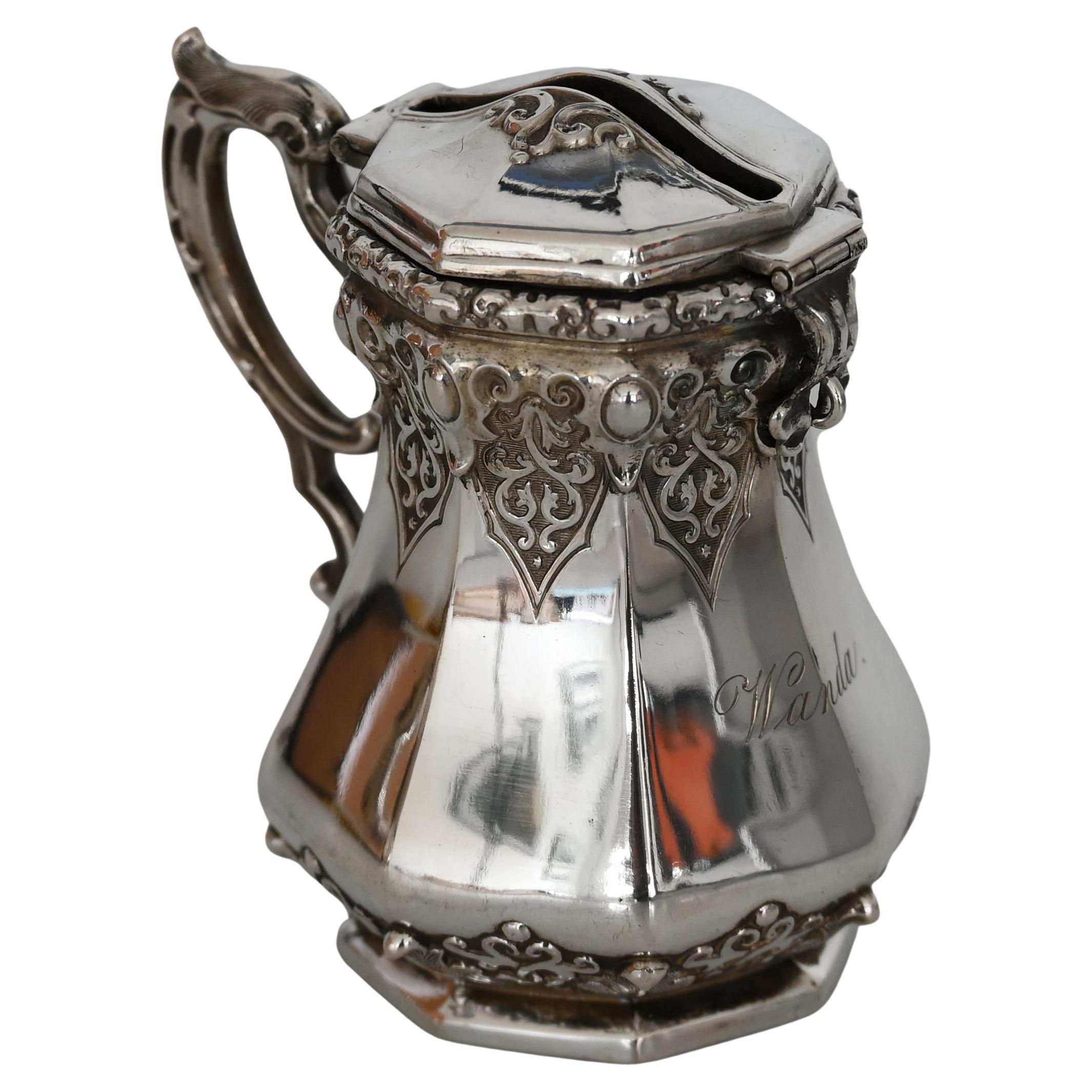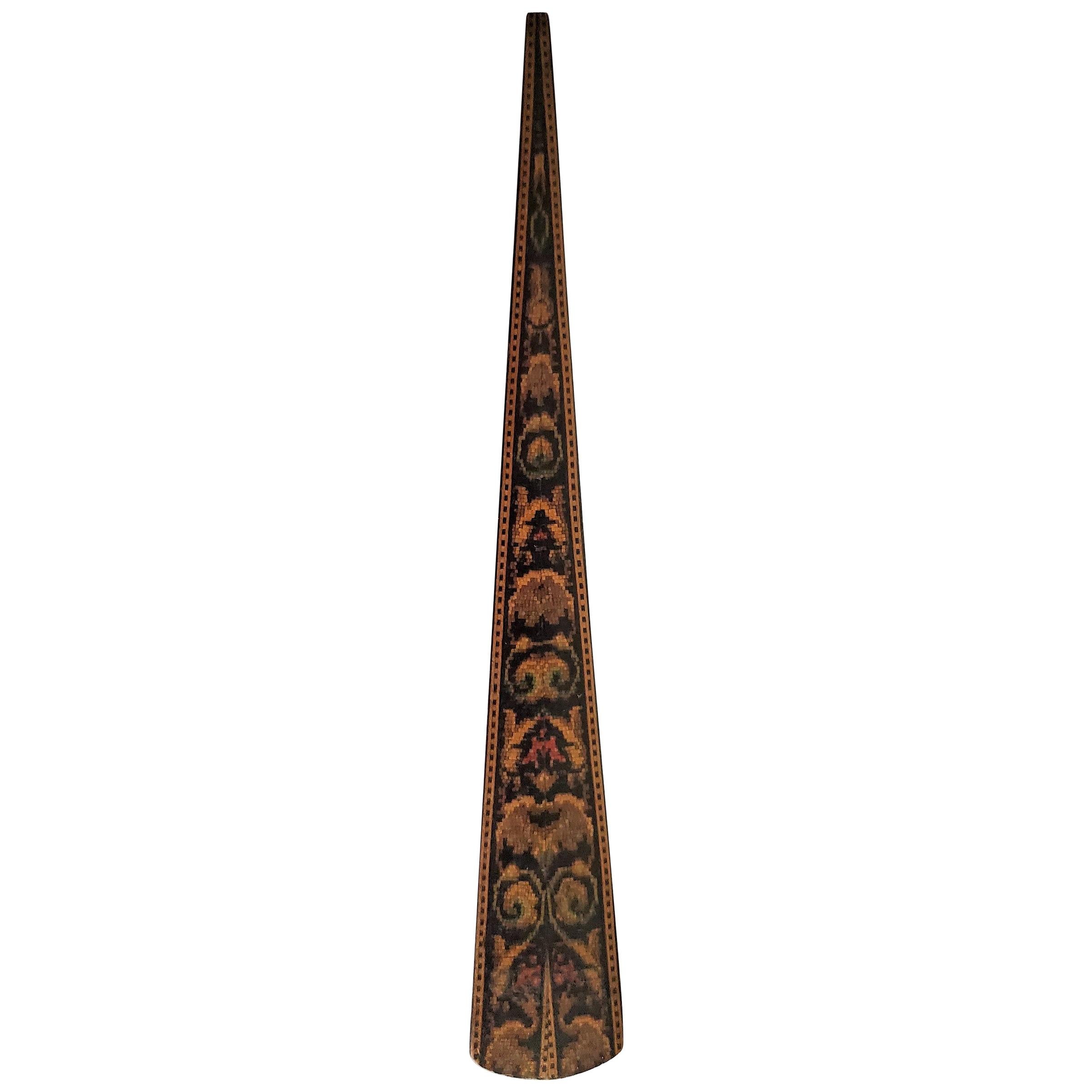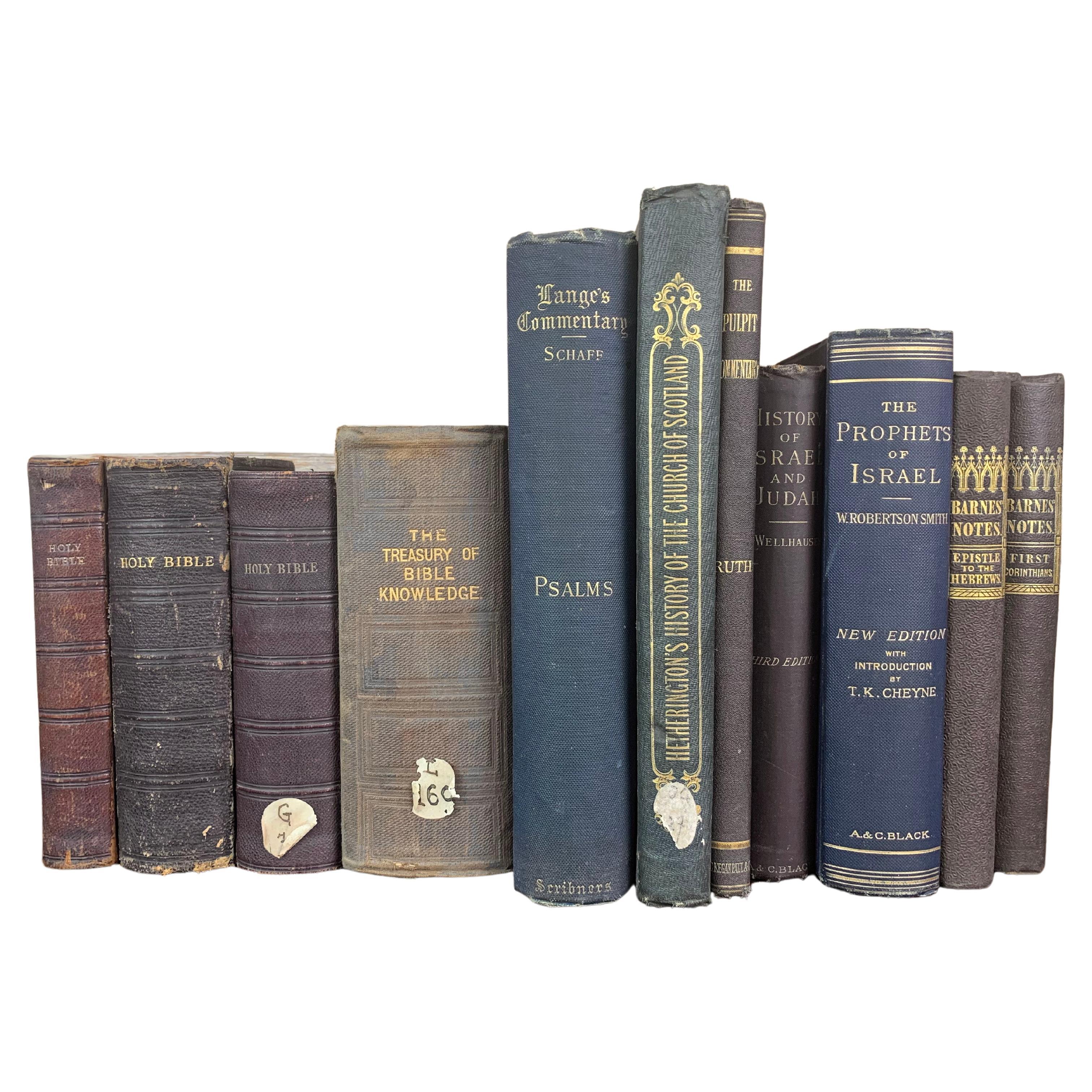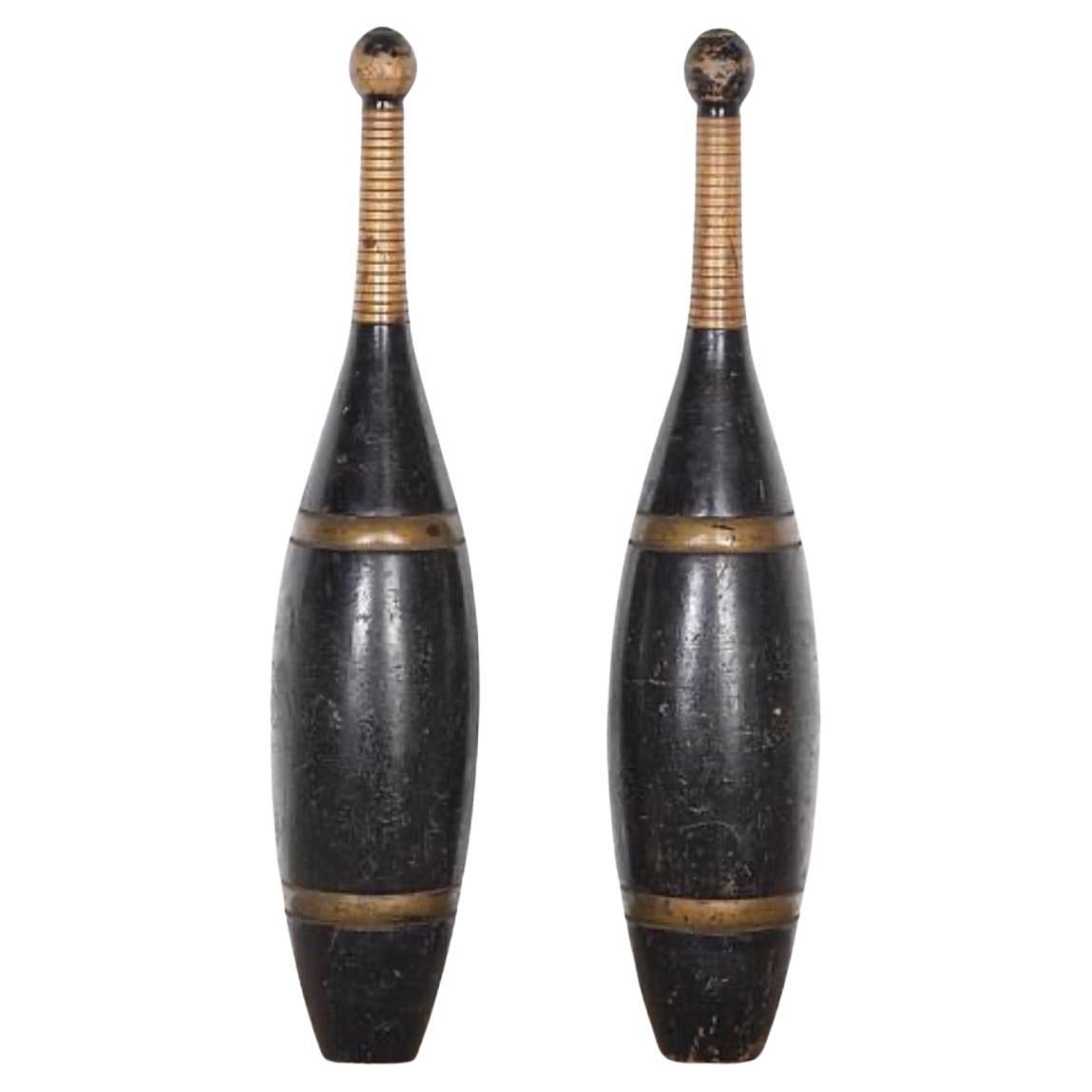Items Similar to Rare Antique 19th Century Lot of 41 German Labor Trade Union Ribbons Medals Pins
Want more images or videos?
Request additional images or videos from the seller
1 of 13
Rare Antique 19th Century Lot of 41 German Labor Trade Union Ribbons Medals Pins
About the Item
Large rare lot of 41 assorted late 19th – early 20th century antique labor union ribbons / pins, primarily from the German speaking Community of Dayton, Ohio, plus a smattering of other cities including Cincinnati, Piqua, and Canton Ohio; Covington, Kentucky; and Milwaukee, Wisconsin.
Dimensions:
Largest – 12.75” x 4.5” / Smallest - 1” x 1” (Length x Width).
- Dimensions:Height: 12.75 in (32.39 cm)Width: 4.5 in (11.43 cm)Depth: 0.25 in (6.35 mm)
- Sold As:Set of 43
- Style:Victorian (Of the Period)
- Materials and Techniques:
- Period:
- Date of Manufacture:19th Century
- Condition:Wear consistent with age and use. Good Antique Condition - Various degrees of wear commensurate with use/age.
- Seller Location:Dayton, OH
- Reference Number:
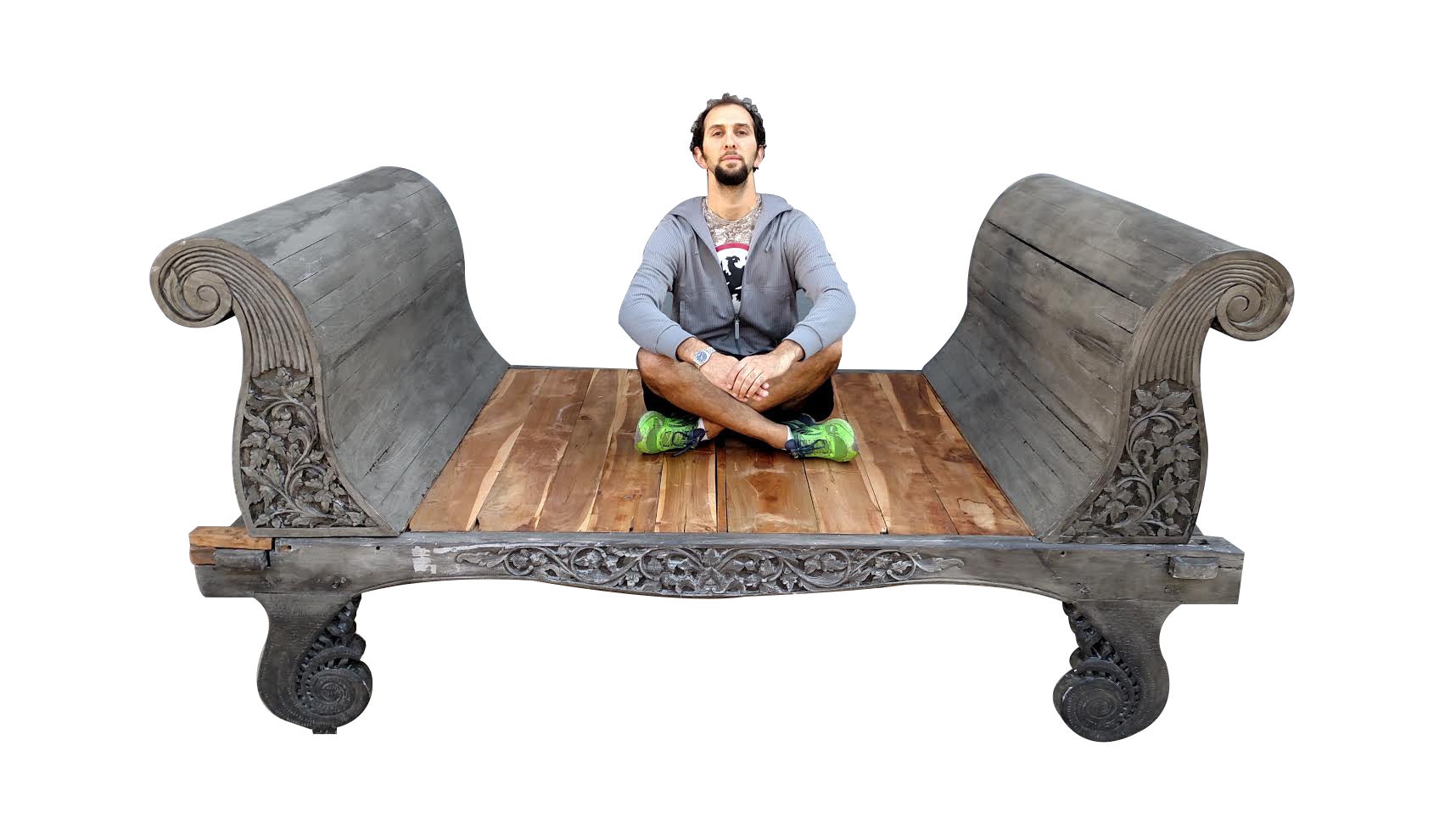
About the Seller
4.9
Platinum Seller
These expertly vetted sellers are 1stDibs' most experienced sellers and are rated highest by our customers.
Established in 2010
1stDibs seller since 2020
1,114 sales on 1stDibs
Typical response time: <1 hour
- ShippingRetrieving quote...Ships From: Dayton, OH
- Return PolicyA return for this item may be initiated within 2 days of delivery.
More From This SellerView All
- Antique 19th Century Victorian German Porcelain China Head Doll Molded HairLocated in Dayton, OHAntique mid 19th century German china doll with painted porcelain bust, feet and hands, cloth body and green dress. Measures: 18”.Category
Antique Mid-19th Century Victorian Toys and Dolls
MaterialsPorcelain, Fabric, Paint
- Antique 19th Century German CM Bergmann Bisque Composite Doll Sleep EyesLocated in Dayton, OHAntique German bisque head doll by CM Bergmann with articulated jointed limbs and composite body, non-original human hair, sleep eyes, marked “Ma...Category
Antique Late 19th Century Victorian Toys
MaterialsCeramic
- Antique 19th Century Agriculture Almanacs & Souvenir Newspaper ArticleLocated in Dayton, OHBrother Jonathan’s Almanac 1854 – Sower & Barnes, Philadelphia Agricultural Almanac, for the Year of Our Lord 1883 – Printed and Sold by John Baer’s Sons, Lancaster Agricultural Almanac for the Year 1889 – Printed and Sold by John Baer’s Sons, Lancaster Facsimilie of the First Newspaper ever Printed in America – Copyrighted 1893 by Historic Publishing Company, successors to the Antique Publishing Company "The earliest newspapers of the New World were published in Boston. The very first venture was attempted in 1690, with the publication of "Publick Occurrences. Both Forreign and Domestick," printed by Richard Pierce for Benjamin Harris...Category
Antique Late 19th Century Victorian Books
MaterialsPaper
- Antique 8pc Red Garnet Gemstone Brooch Pins Bracelet Bohemian Jewelry LotLocated in Dayton, OHAntique and vintage lot of red Garnet jewelry featuring pins / brooches / pendants / bracelet and earrings. Earrings and bracelet 800 silver. Scal...Category
Early 20th Century Collectible Jewelry
MaterialsMulti-gemstone, Metal
- Antique Bayliss & Co 19th Century English Brass Apothecary Counter Scale BalanceBy Bayliss & CoulthardLocated in Dayton, OH"An antique 4 lb mercantile balance by Bayliss & Co of Birmingham, England. Features a twisted iron stand and brass balance with tray and scoop. Makers mark engraved along top arm The antique apothecary scale...Category
Antique Late 19th Century Victorian Scientific Instruments
MaterialsBrass, Iron
- Antique 19th Century CM Bergmann Simon & Halbig Bisque Composite Girl DollLocated in Dayton, OHAntique German bisque head doll by CM Bergmann with composite body and articulated jointed limbs, sleep eyes, marked “CM Bergmann Simon & Halbig ...Category
Antique Late 19th Century Victorian Toys
MaterialsCeramic
You May Also Like
- Rare French, Early 19th Century Napoleonic Medal CabinetLocated in Worpswede / Bremen, DERare French early 19th century Napoleonic medal cabinet on four gilt bronze pawfeet, a hinged door to the top and front opening to reveal four drawers containing 184 very fine bronzed plaster medals...Category
Antique Early 19th Century French Empire Historical Memorabilia
MaterialsPlaster, Wood, Paper
- Late 19th Century Jewellers Trade SignLocated in London, GBLate 19th Century Jewellers Trade Sign We share what we love, and we love this untouched example of a watch makers, jewellers trade sign. Make from cast iron and zinc, double sided, with traces of the painted clock face on both sides. We have mounted this object to a cast iron bespoke stand for ease of display. It can be removed from the stand and hung if you wish. One of the best examples we have been lucky enough to uncover. Size of inches: H 31” x W 18” x D 3.5” (Includes stand) Condition: Aged Origin: European Age: late 19th century Note: This item weighs close of 30kg Completely solid in structure and form, Natural aging across all surfaces, an aged 100-year-old antique item, loss of paint, one side of the clocks zinc face...Category
Antique 19th Century British Victorian Architectural Models
MaterialsIron, Zinc
- 19th Century Savings Box Biedermeier Period German Silver 13 LotLocated in Epfach, DEBeautiful small piggy bank from the Biedermeier period in silver 13 lot. Decorated with rocailles and leaves, beautifully worked out; in front a finely engraved monogram with the fi...Category
Antique 1850s German Biedermeier Decorative Boxes
MaterialsSilver
- Rare 19th Century English Tunbridgeware Hair Pin or SlideLocated in Dallas, TXPresenting an absolutely gorgeous and extremely unique and rare 19th century British Tunbridgeware hair pin/bobbin or slide. This slide is unlike any of it’s kind we have seen before…. it is a very rare survivor ! From circa 1860–1880. Made of walnut with gorgeous marquetry inlay on the entirety of the front with classic Tunbridgeware micro-mosaic all over the front. The rear is walnut. The marquetry inlay appears to be various different woods, namely, maple, walnut and satinwood. Would have been worn in a Lady’s hair bun with the micro-mosaic facing forward. This would have belonged to a very elegant lady in the mid to late 19th century. Tunbridge ware is a form of decoratively inlaid woodwork, typically in the form of boxes, that is characteristic of Tonbridge and the spa town of Royal Tunbridge Wells in Kent in the 18th and 19th centuries. The decoration typically consists of a mosaic of many very small pieces of different coloured woods that form a pictorial vignette. Shaped rods and slivers of wood were first carefully glued together, then cut into many thin slices of identical pictorial veneer with a fine saw. Elaborately striped and feathered bandings for framing were pre-formed in a similar fashion. There is a collection of Tunbridge ware in the Tunbridge Wells Museum and Art Gallery in Tunbridge Wells. The famous makers of Tunbridge ware were in the Tunbridge Wells area of Kent; their most notable work was from circa 1830-1900. Early makers of Tunbridge ware, in Tunbridge Wells in the mid-18th century, were the Burrows family, and Fenner and Co. In the 19th century, around 1830, James Burrows invented a technique of creating mosaics from wooden tesserae. Henry Hollamby, apprenticed to the Burrows family, set up on his own in 1842 and became an important manufacturer of Tunbridge ware, employing about 40 people. Edmund Nye (1797–1863) and his father took over the Fenner company when William Fenner retired in 1840, after 30 years in partnership with him. Thomas Barton (1819–1903), previously apprenticed at the Wise factory, joined the Nyes in 1836, and worked as Nye’s designer; he took over the business in 1863 and continued there until his death. In Tonbridge (near to Tunbridge Wells), George Wise (1703–1779) is known to have had a business in 1746. It continued with his son Thomas, and Thomas’s nephew George (1779–1869), who took over in 1806. In its early years the company made articles such as workboxes and tea caddies with prints of popular views; later items had pictures created from mosaics. Their workshop in Tonbridge, Wise’s Tunbridge Ware Manufactory, was next to the Big Bridge over the Medway; the building was demolished in 1886 to widen the approach to the bridge. Tunbridge ware became popular with visitors to the spa town of Tunbridge Wells, who bought them as souvenirs and gifts. Articles included cribbage boards, paperweights, writing slopes, snuffboxes and glove boxes. At the Great Exhibition of 1851, Tunbridge ware by Edmund Nye, Robert Russell and Henry Hollamby was shown; Edmund Nye received a commendation from the judges for his work. He exhibited a table depicting a mosaic of a ship at sea; 110,800 tesserae were used in making the picture. The manufacturers of Tunbridge ware were cottage industries, and they were no more than nine in Tunbridge Wells and one in Tonbridge. The number declined in the 1880s; competent craftsmen were hard to find, and public tastes changed. After the death of Thomas Barton in 1903 the only surviving firm was Boyce, Brown and Kemp, which closed in 1927. Marquetry was an old technique which was continued by Nye and Barton to create images such as birds or butterflies. ‘Green Oak’ as caused by the fungus Chlorociboria aeruginascens. Stickware and half-square mosaic was invented by James Burrows in about 1830: a bunch of wooden sticks of different colours, each having triangular or diamond-shaped cross section, were tightly glued together; in the case of stickware, the resulting block was dried, then turned to form an article such as the base of a pincushion. For half-square mosaic, thin slices were taken from the composite block, and applied to a surface.[1][2][4] Tesselated mosaic, was a development by James Burrows of half-square mosaic; it was adopted by George Wise and Edmund Nye. Minute tesserae were used to form a wide variety of geometric and pictorial designs. Many sorts of wood were used for the various colours; about 40 were in regular use. Only natural colors were used; green was provided by “green oak”, produced by the action of fungus on fallen oak. Designs for articles were often taken from designs of Berlin wool work.Category
Antique Late 19th Century English High Victorian Collectible Jewelry
MaterialsSatinwood, Walnut
- Lot of Old Books from the 19th CenturyLocated in Beuzevillette, FRMany books on various subjects such as the church of Scoltand or the history of Israel. Set of old books dating from the 19th century. From an old protestant...Category
Antique Mid-19th Century European Books
MaterialsPaper
- Pair of 19th Century Juggler PinsLocated in Los Angeles, CAPair of 19th century juggler's pins with beautiful black and gold painting. A whimsical sculptural accent with unique history. England, cir...Category
Antique 1890s English Games
MaterialsWood

